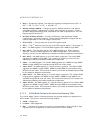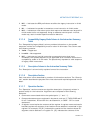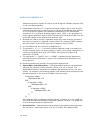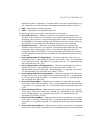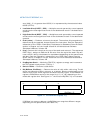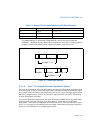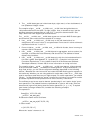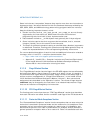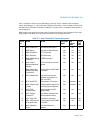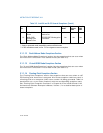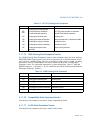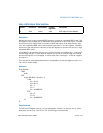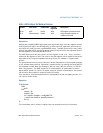
3-14 Vol. 2A
INSTRUCTION SET REFERENCE, A-M
Some intrinsics are “composites” because they require more than one instruction to
implement them. You should be familiar with the hardware features provided by the
SSE, SSE2, SSE3, and MMX technology when writing programs with the intrinsics.
Keep the following important issues in mind:
• Certain intrinsics, such as _mm_loadr_ps and _mm_cmpgt_ss, are not directly
supported by the instruction set. While these intrinsics are convenient
programming aids, be mindful of their implementation cost.
• Data loaded or stored as __m128 objects must generally be 16-byte-aligned.
• Some intrinsics require that their argument be immediates, that is, constant
integers (literals), due to the nature of the instruction.
• The result of arithmetic operations acting on two NaN (Not a Number) arguments
is undefined. Therefore, floating-point operations using NaN arguments may not
match the expected behavior of the corresponding assembly instructions.
For a more detailed description of each intrinsic and additional information related to
its usage, refer to Intel C/C++ compiler documentation. See:
— http://www.intel.com/support/performancetools/
— Appendix C, “Intel® C/C++ Compiler Intrinsics and Functional Equivalents,”
in the Intel® 64 and IA-32 Architectures Software Developer’s Manual,
Volume 2B, for more information on using intrinsics.
3.1.1.9 Flags Affected Section
The “Flags Affected” section lists the flags in the EFLAGS register that are affected by
the instruction. When a flag is cleared, it is equal to 0; when it is set, it is equal to 1.
The arithmetic and logical instructions usually assign values to the status flags in a
uniform manner (see Appendix A, “Eflags Cross-Reference,” in the Intel® 64 and
IA-32 Architectures Software Developer’s Manual, Volume 1). Non-conventional
assignments are described in the “Operation” section. The values of flags listed as
undefined may be changed by the instruction in an indeterminate manner. Flags
that are not listed are unchanged by the instruction.
3.1.1.10 FPU Flags Affected Section
The floating-point instructions have an “FPU Flags Affected” section that describes
how each instruction can affect the four condition code flags of the FPU status word.
3.1.1.11 Protected Mode Exceptions Section
The “Protected Mode Exceptions” section lists the exceptions that can occur when the
instruction is executed in protected mode and the reasons for the exceptions. Each
exception is given a mnemonic that consists of a pound sign (#) followed by two
letters and an optional error code in parentheses. For example, #GP(0) denotes a
general protection exception with an error code of 0. Table 3-3 associates each two-



